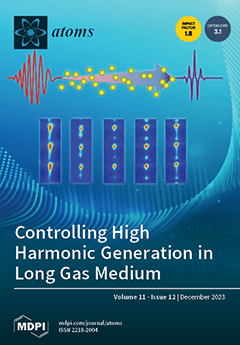Criegee intermediates, which are the products of the ozonolysis of alkenes, play a key role in many chemical and physical processes in the atmosphere. Their reactions with other atmospheric compounds are responsible for the formation of hydroxyl, methyl, hydrogen radicals, nitric and sulfuric
[...] Read more.
Criegee intermediates, which are the products of the ozonolysis of alkenes, play a key role in many chemical and physical processes in the atmosphere. Their reactions with other atmospheric compounds are responsible for the formation of hydroxyl, methyl, hydrogen radicals, nitric and sulfuric acids, and others. Methane is an active greenhouse gas whose concentration has increased rapidly in the last several decades. In this work, we consider the interaction between these two important atmospheric compounds. We choose the three simple Criegee intermediate (CI) molecules: formaldehyde oxide (CH
2OO), acetaldehyde oxide (CH
3CHOO), and acetone oxide ((CH
3)
2COO). Some reactions between methane and these Cis have been studied earlier as possible pathways for deactivating methane as well as a source of methanol formation due to molecular collisions in the atmosphere. In the present study, we extend the consideration to the case when an intermediate energetically stable complex is formed after collision. We found that this complex could easily decompose to form an OH radical and another unstable fragment, which can quickly dissociate into CH
3 radicals, atomic hydrogen, acetone, acetaldehyde, propaldehyde, methyl alcohol, water, and others, depending on the type of CI being reacted with. These compounds can actively interact with other atmospheric components and change their physical and chemical properties. In addition, CI with a methyl substituent is shown to have increased energy in transition states and minima, resulting in slower reaction rates.
Full article





